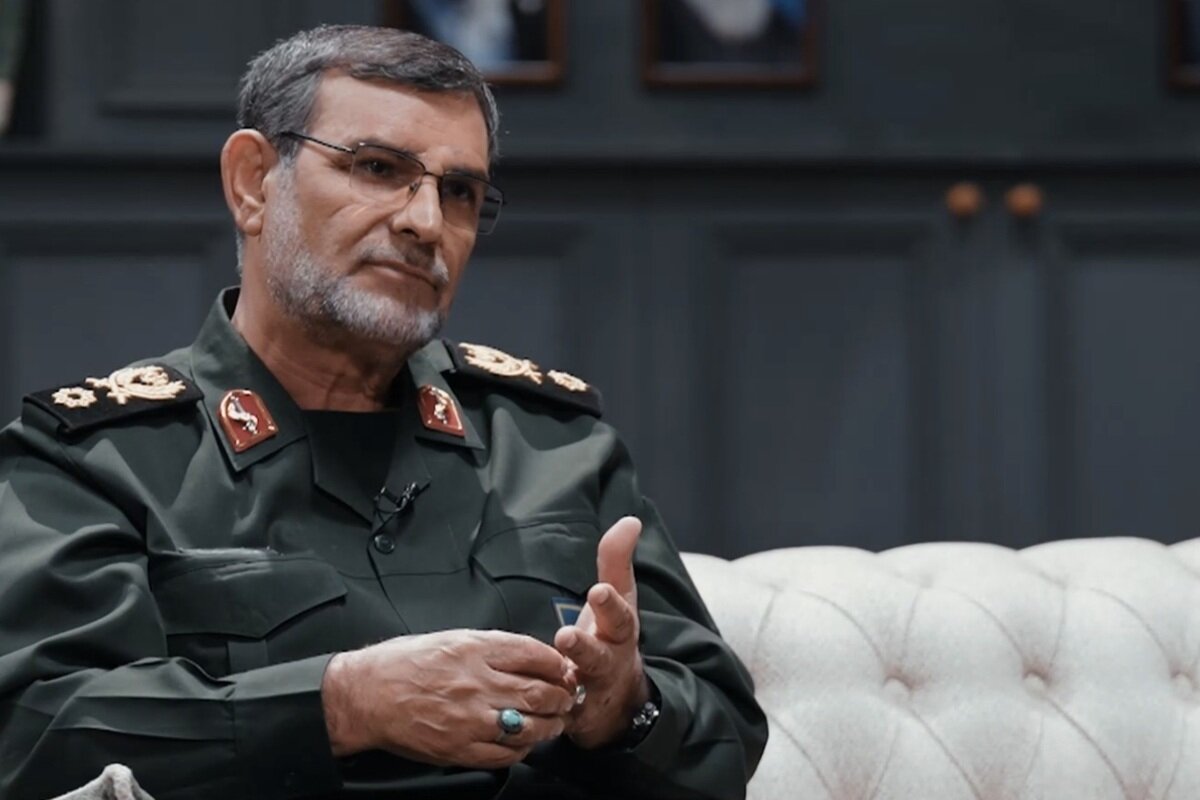US cannot challenge Iran in Persian Gulf IRGC Navy Chief
‘US cannot challenge Iran in Persian Gulf:’ IRGC Navy Chief
TEHRAN – Rear Admiral Alireza Tangsiri, commander of the Islamic Revolution Guard Corps (IRGC) Navy, declared the United States “incapable” of challenging Iran’s maritime dominance and vowed “decisive retaliation” against any aggression toward its oil tankers or territorial waters.

In an interview with Iran’s national TV, which aired on Sunday, Tangsiri attributed decades of U.S. “bullying” to Tehran’s unyielding resistance and noted that Iran now exercises unrivaled strategic control over the Persian Gulf’s vital waterways.
This interview comes amid escalating U.S. military posturing in West Asia, marked by the deployment of additional warships to the region and renewed anti-Iran rhetoric from U.S. officials.
Referring to U.S. Navy aircraft carriers, he remarked, “Their carriers once toppled governments; today, our vessels order them out of our waters.”
Tangsiri also emphasized Iran’s control over critical infrastructure, such as oil and gas platforms, as both a strategic advantage and the cornerstone of a peaceful stance that avoids initiating conflicts at sea.
He further showcased the nation’s defense capabilities by noting the strength of its air defenses and the quality of its missile production.
“We have built a vessel that is better than similar American models; when the time comes, we might unveil it,” Tangsiri declared.
Stressing the importance of military strength for national dignity, he stated, “Today, if we want to preserve our dignity, we must have strong armed forces.”
He explained that for the IRGC Navy, robust power is not only key to security but also a source of national pride, as evidenced by the Navy’s role in safeguarding vital assets like the South Pars gas field and in countering piracy.
Turning to technological advancements, Tangsiri spotlighted the Shahid Bagheri vessel—a multi-purpose naval base capable of deploying missile launcher groups arranged to carry a total of 14 missile units.
He also celebrated the groundbreaking achievement of launching Iran’s first drone carrier, equipped with a 180-meter runway—a milestone that underscores the country’s engineering ingenuity.
Moreover, he noted that the IRGC Navy’s arsenal now includes missiles with a 2,000-kilometer range, drones, and submarines, while its vessels can reach speeds of up to 110 knots.
Iran’s naval shield
The IRGC Navy, established after the 1979 Islamic Revolution, is Iran’s vanguard maritime force, entrusted with defending national sovereignty and revolutionary principles in the Persian Gulf and Strait of Hormuz.
Evolving from a militia into a formidable asymmetric warfare specialist, it employs swarm tactics, advanced mine warfare, and coastal defense strategies.
Equipped with radar systems capable of detecting targets up to 200 km away, robust air defense networks, and a fleet of fast-attack craft armed with anti-ship missiles and drones, the IRGC Navy dominates maritime confrontations while deterring foreign encroachment.
Renowned for intercepting hostile warships near Iranian waters, it enforces maritime boundaries and asserts Tehran’s authority.
The force has executed high-profile operations, seizing tankers involved in smuggling or sanctions evasion, reflecting Iran’s commitment to combating maritime crime and upholding regional security.
Recent upgrades, including advanced warships and high-speed fleets, align with Iran’s “look to the sea” doctrine, enhancing its capacity to secure critical waterways like the Strait of Hormuz.
Through indigenous technological advancements and unwavering resolve, the IRGC Navy symbolizes Iran’s strategic resilience and self-reliance, countering external pressures while ensuring stability in one of the world’s most vital maritime corridors.
source: tehrantimes.com